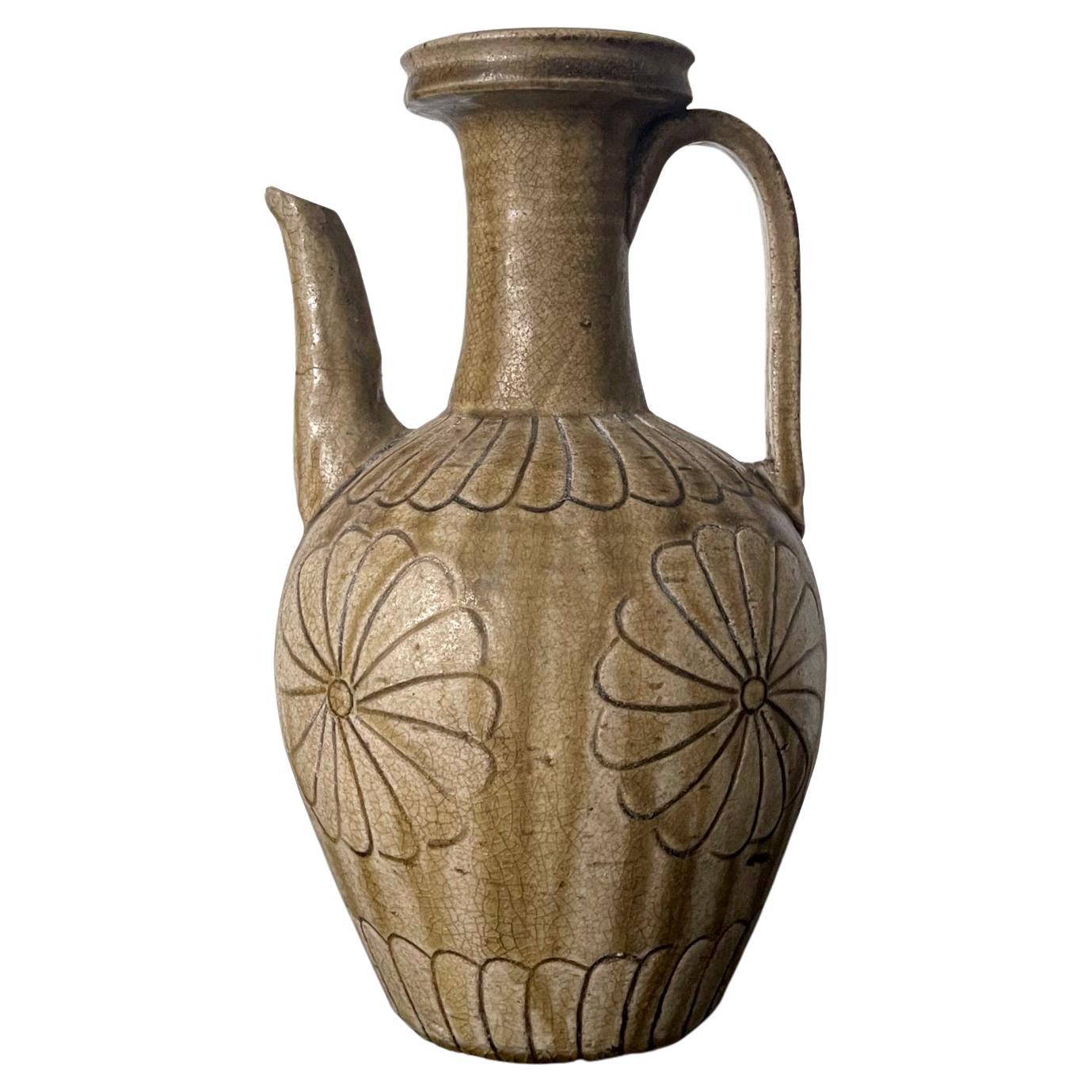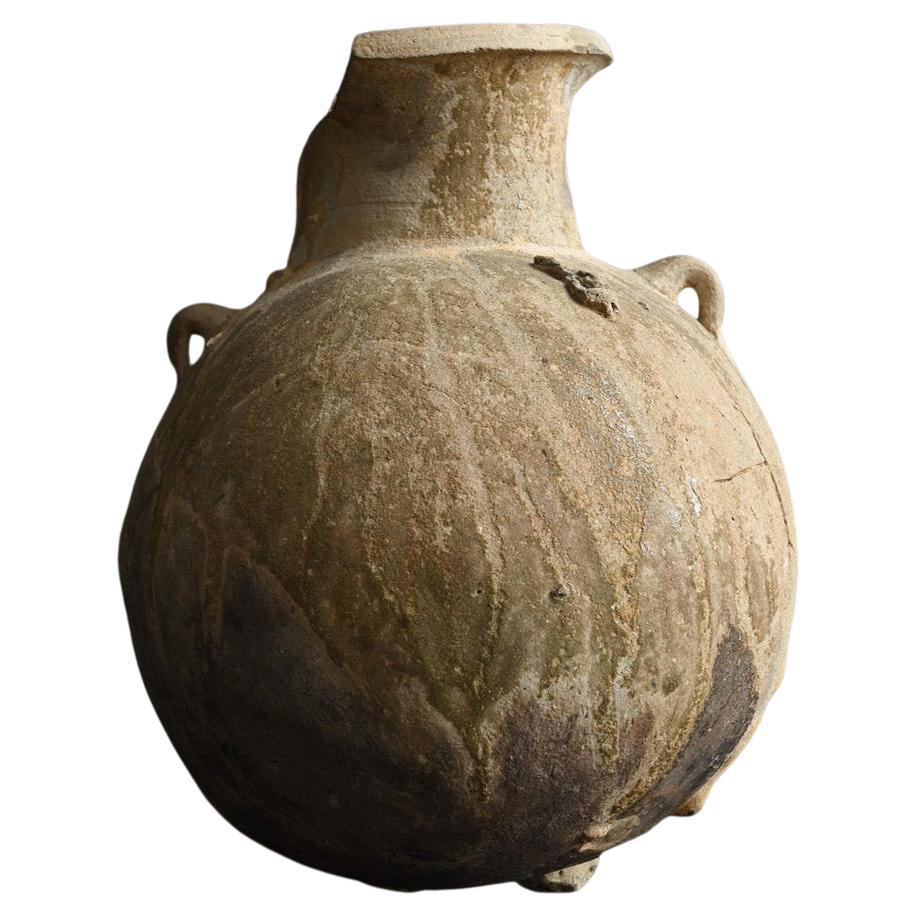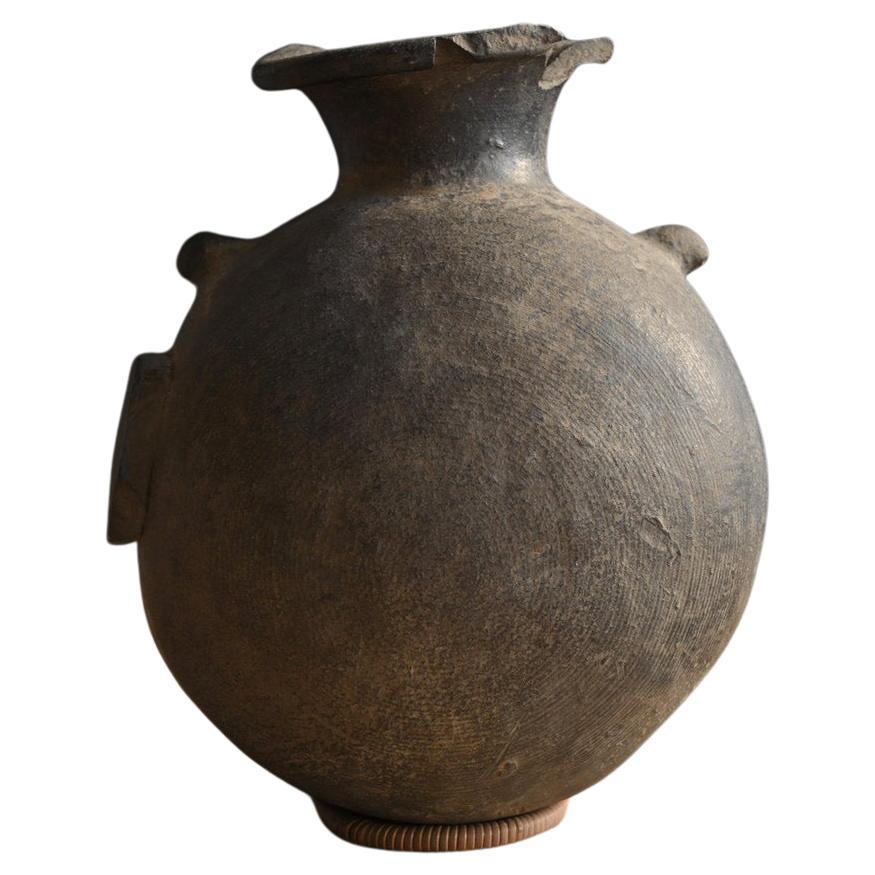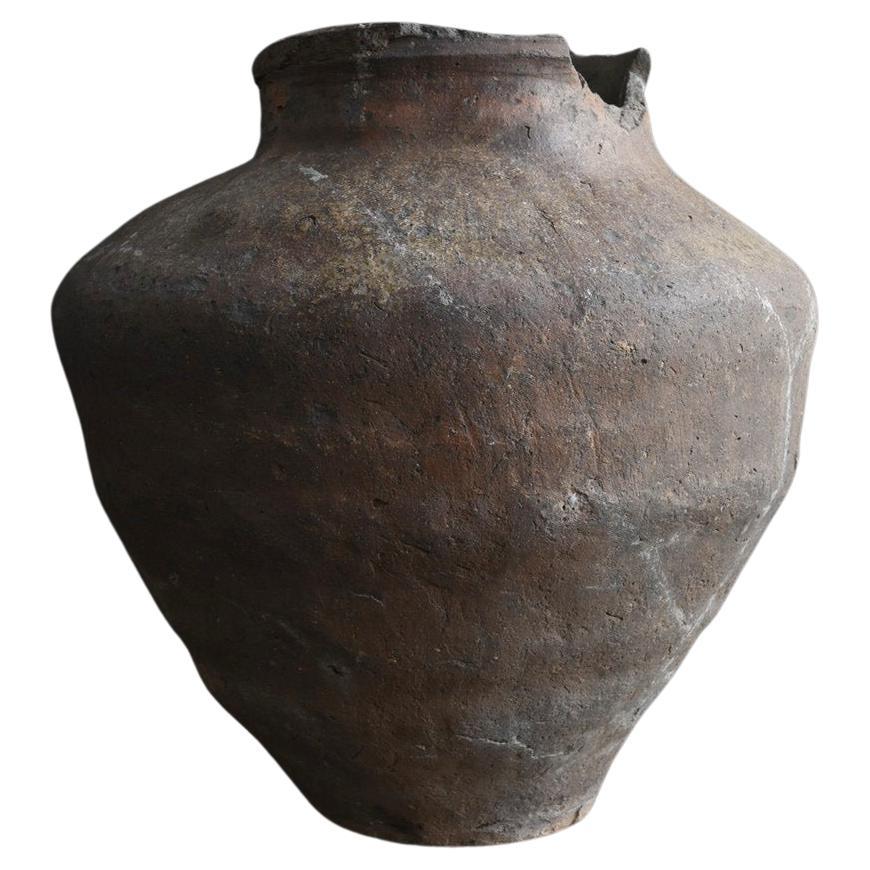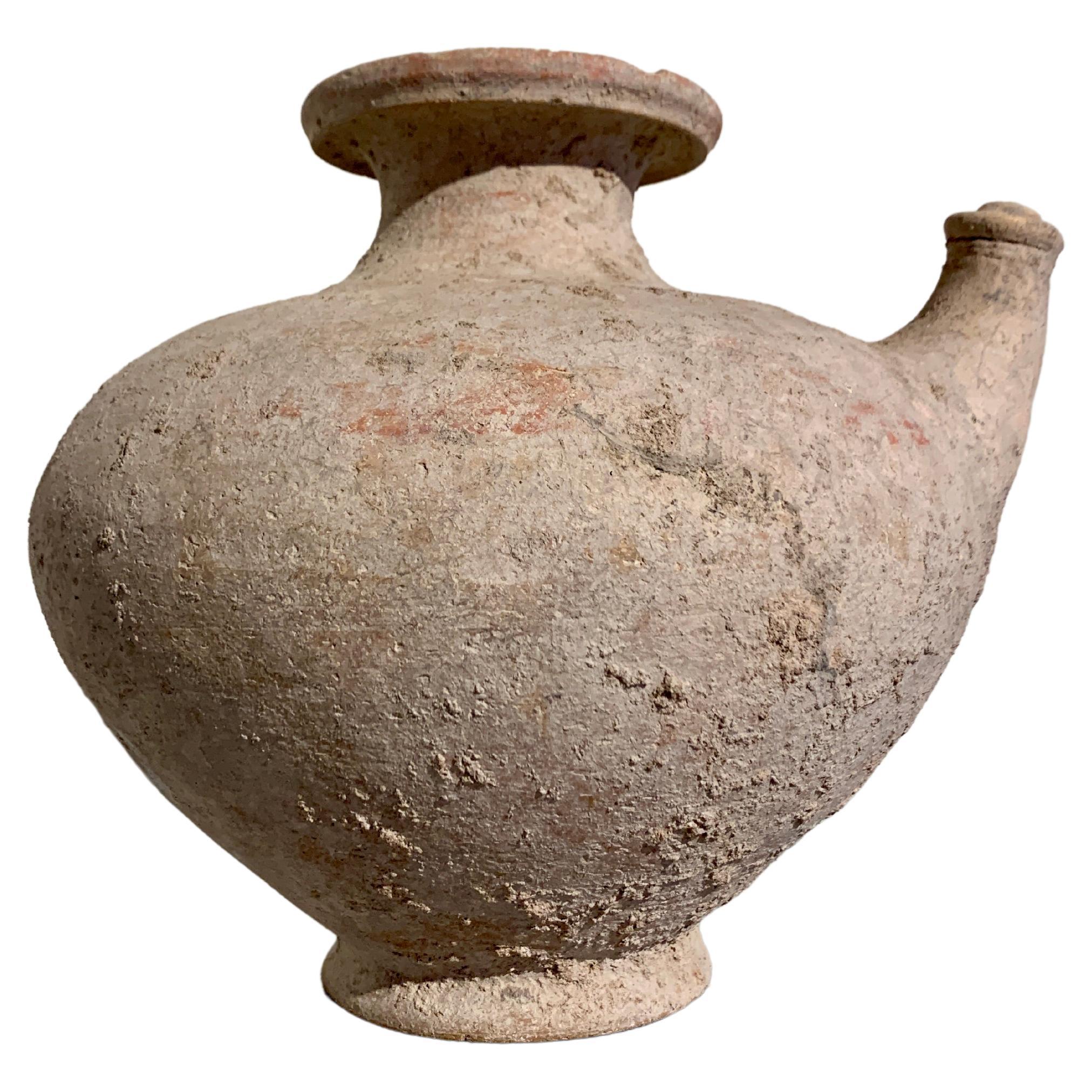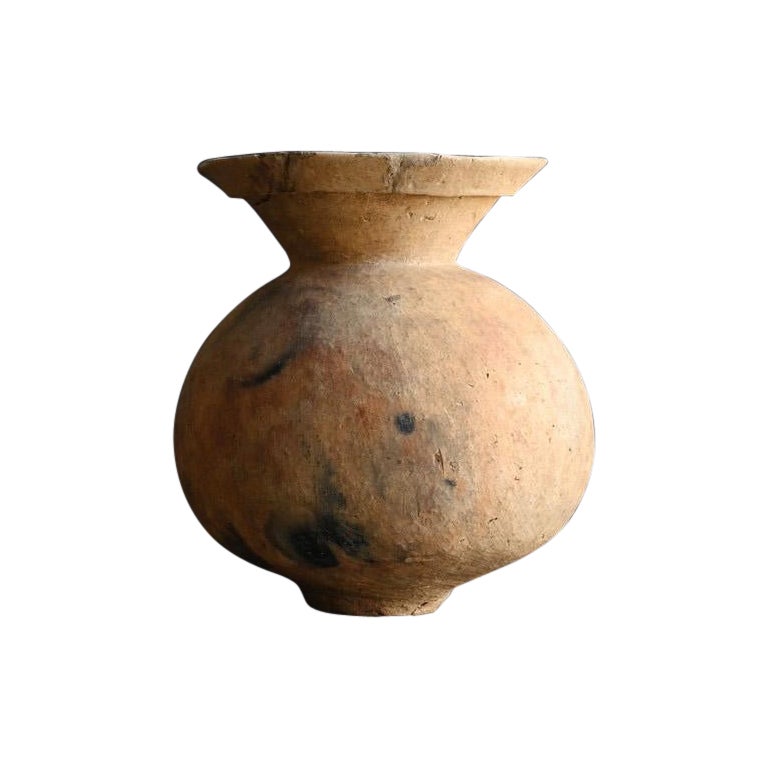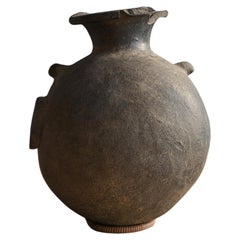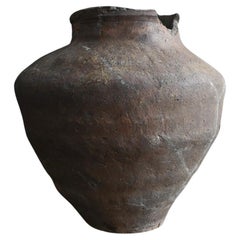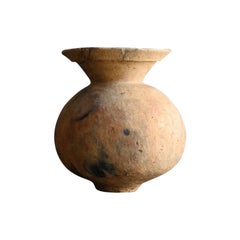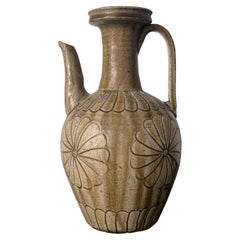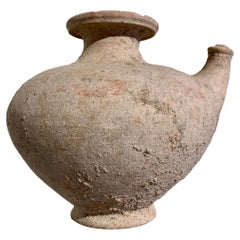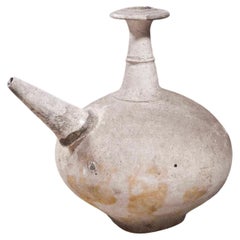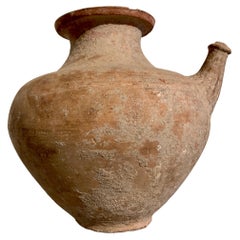Items Similar to Very old Japanese teapot-shaped pottery "Koseto" / 1200s / Excavated pottery
Want more images or videos?
Request additional images or videos from the seller
1 of 20
Very old Japanese teapot-shaped pottery "Koseto" / 1200s / Excavated pottery
$800
£611.64
€704.49
CA$1,121.05
A$1,251.54
CHF 655.79
MX$15,320.10
NOK 8,328.53
SEK 7,852.74
DKK 5,257.67
Shipping
Retrieving quote...The 1stDibs Promise:
Authenticity Guarantee,
Money-Back Guarantee,
24-Hour Cancellation
About the Item
This is Seto ware.
Seto is a kiln with a long history located in Aichi Prefecture, Japan (Seto kilns are marked with red circles on the map). It is said to have originated around the 13th century.
In Japan, items from this period of Seto ware are referred to as "Ko-Seto." "Ko" means "old."
This particular item is Ko-Seto, which was fired around the 13th century.
One of the distinguishing features of Ko-Seto, as compared to other kilns, is the presence of glaze. While other kilns produced mostly unglazed pottery, Ko-Seto was covered with ash glaze, giving it a yellowish-green or pale emerald-green color.
In the early Kamakura period (13th century), when Ko-Seto production began, there was increased demand from temples in Kamakura (the capital city of the time, in present-day Kanagawa Prefecture) and the Tokai region for roof tiles, Buddhist ritual objects, and burial urns.
As a result, in addition to Chinese and Korean ceramics, domestic ceramics such as Ko-Seto, which imitated those styles, were produced and circulated.
Later, Ko-Seto production was closely connected with the Kamakura shogunate, producing high-value, custom-made items with various designs for the urban elite of Kamakura.
In other words, Ko-Seto was a type of pottery made for high-status individuals, and it was prized as a luxury item.
This piece, too, was created for such people.
However, it is believed that during the firing stage, the handle was damaged, so it was never sold and was discarded, only to be excavated in our time.
The broken ceramic pieces were reassembled, and the missing parts were restored.
The yellowish stains are likely adhesive used to prevent further flaking of the glaze.
Ko-Seto is known for its weak adhesion between the clay and glaze, so many excavated pieces show some degree of glaze loss.
Additionally, if you pour water into it, the bottom will become damp, so it cannot be used as a flower vase.
Another feature of Ko-Seto is the incised rings on its surface, and this teapot shares that characteristic.
There aren’t many surviving examples, and teapot-shaped items like this one are rare.
If it were in perfect condition, it would likely be displayed in a museum.
This small and charming teapot will blend seamlessly into any space, whether it’s your entryway, living room, or collection room.
Although it is small, its historical significance and the meaning it carries are immeasurable.
Just having one piece like this in your room allows you to feel the traditional beauty and spirit of Japan, adding a touch of richness to your daily life.
Additionally, I have set a reasonable price because I want more people to appreciate the beauty of antiques.
How about showing it off to your friends?
Weight: 0.75kg
We, Brood, are a company consisting of four different stores with four different brands.
We offer a wide range of attractive items from all over the world with a focus on Japanese items.
- Dimensions:Height: 5.52 in (14 cm)Width: 5.32 in (13.5 cm)Depth: 4.45 in (11.3 cm)
- Style:Other (Of the Period)
- Materials and Techniques:
- Place of Origin:
- Period:
- Date of Manufacture:1200s
- Condition:Repaired: After excavation, the pottery fragments were re-glued and partially restored.
- Seller Location:Sammu-shi, JP
- Reference Number:1stDibs: LU5487241455922
About the Seller
5.0
Gold Seller
Premium sellers maintaining a 4.3+ rating and 24-hour response times
Established in 2015
1stDibs seller since 2020
1,604 sales on 1stDibs
Typical response time: 6 hours
- ShippingRetrieving quote...Shipping from: senzoku, Japan
- Return Policy
Authenticity Guarantee
In the unlikely event there’s an issue with an item’s authenticity, contact us within 1 year for a full refund. DetailsMoney-Back Guarantee
If your item is not as described, is damaged in transit, or does not arrive, contact us within 7 days for a full refund. Details24-Hour Cancellation
You have a 24-hour grace period in which to reconsider your purchase, with no questions asked.Vetted Professional Sellers
Our world-class sellers must adhere to strict standards for service and quality, maintaining the integrity of our listings.Price-Match Guarantee
If you find that a seller listed the same item for a lower price elsewhere, we’ll match it.Trusted Global Delivery
Our best-in-class carrier network provides specialized shipping options worldwide, including custom delivery.More From This Seller
View AllVery old Japanese pottery Jar "Sueki"/beautiful natural glaze/Excavated item
Located in Sammu-shi, Chiba
Sue pottery is called "sueki" in Japanese.
Earthenware that was baked at low temperatures is now being baked at high temperatures due to the development of kiln technology.
It is a l...
Category
Antique 15th Century and Earlier Japanese Other Jars
Materials
Pottery
Japanese Beautiful Antique Pottery/Sue Pottery/Around 9th Century/Excavated Vase
Located in Sammu-shi, Chiba
We have an aesthetic sense peculiar to Japanese people.
And we introduce the unique items that only we can do, the route of purchasing in Japan, the experience value so far, and the ...
Category
Antique 15th Century and Earlier Japanese Other Vases
Materials
Pottery
Rare Japanese antique pottery jar/13th century/Kamakura period/Excavated pottery
Located in Sammu-shi, Chiba
We would like to introduce you to some fascinating pots excavated in Japan.
This is a pot fired in an ancient Japanese kiln called Tokoname ware.
Tokoname is a kiln located in Aichi...
Category
Antique 15th Century and Earlier Japanese Other Jars
Materials
Pottery
Very old Japanese excavated earthenware/Wabi Sabi vase
Located in Sammu-shi, Chiba
This is earthenware excavated in Japan.
It has a very beautiful shape and is well balanced.
The color of the pottery is light brown because it is fired at a low temperature.
Dependin...
Category
Antique 15th Century and Earlier Japanese Other Vases
Materials
Pottery
Japanese antique pottery bowl [tokoname ware]/Tokoname ware/12th-13th century
Located in Sammu-shi, Chiba
This bowl is made from Tokoname ware, a type of pottery from Aichi Prefecture. Tokoname ware has a history dating back to the 12th century, and there are still several active kilns t...
Category
Antique 15th Century and Earlier Japanese Other Antiquities
Materials
Pottery
Korean Very Old Pottery Vase/10th Century to 14th Century/Goryeo Dynasty
Located in Sammu-shi, Chiba
This is Korean pottery made between the 10th century and the 14th century.
At that time, it was called the Goryeo Dynasty, and various objects such as metalwork and pottery were mad...
Category
Antique 15th Century and Earlier South Korean Other Vases
Materials
Pottery
You May Also Like
Japanese Ko-Seto Stoneware Ewer with Carved Design
Located in Atlanta, GA
On offer is a rare Ko-seto (old seto) stoneware ewer from Kamakura period (12-14th century) Japan. The exceptionally heavily potted ewer is made of stoneware. The main body was likely hand-coiled with individually built handle, sprout and wheel-made neck and mouth assembled. It takes the basic form from the contemporary Chinese ewer...
Category
Antique 15th Century and Earlier Japanese Archaistic Ceramics
Materials
Stoneware
Pre-Khmer Pottery Pouring Vessel, Kendi, 6th-8th Century, Cambodia
Located in Austin, TX
An evocative large pottery pouring vessel, kendi, pre-Khmer, 6th-8th century, Cambodia.
The large kendi of typical form, with a bulbous body set on a...
Category
Antique 15th Century and Earlier Cambodian Ceramics
Materials
Pottery
15th Century Majaphit Holy Water Vessel, Shipwreck Salvage
Located in Richmond, VA
Earthenware holy water recipient from Java, Indonesia. The vessel is also known as “kendi”, and go back as far as the 13th-15th century, when some indigenous groups were still Christ...
Category
Antique 15th Century and Earlier Indonesian Antiquities
Materials
Ceramic
Large Pre-Khmer Pottery Pouring Vessel, Kendi, 6th - 8th Century, Cambodia
Located in Austin, TX
A large and attractive pre-Khmer red pottery kendi, pouring vessel, 6th - 8th century, Cambodia.
The large vessel crafted of a red pottery, with a wid...
Category
Antique 15th Century and Earlier Burmese Ceramics
Materials
Pottery
Teapot, Asian Art, 20th Century
Located in Saint-Ouen, FR
Teapot, terracotta, Asian Art, 20th century
Measures: H: 12cm, W: 19cm, D: 14cm.
Category
20th Century Asian Ceramics
Materials
Terracotta
Vintage Mid Century Ceramic Tea Pot
By David Cressey, Architectural Pottery
Located in San Diego, CA
Great stoneware ceramic tea pot. Beautiful design with variety of techniques. This piece has cracks from restoration that do not deter of its style and...
Category
Mid-20th Century American Mid-Century Modern Ceramics
Materials
Stoneware
$220 Sale Price
20% Off
More Ways To Browse
Very Old Antique Antiques
Antique Old World Art
Japanese Glazed Pottery
Kiln Japanese
Antique Japanese Pottery
Red Clay Pottery
Antique Pottery Companies
Japanese Roof
Japanese Ash
Used Roof Tile
Red Chinese Pottery
Antique Pottery Tile
Teapot Flowers
Green Teapot
Asian Tiles
Antique Chinese Teapots
Antique Japanese Rings
Japanese Tile
